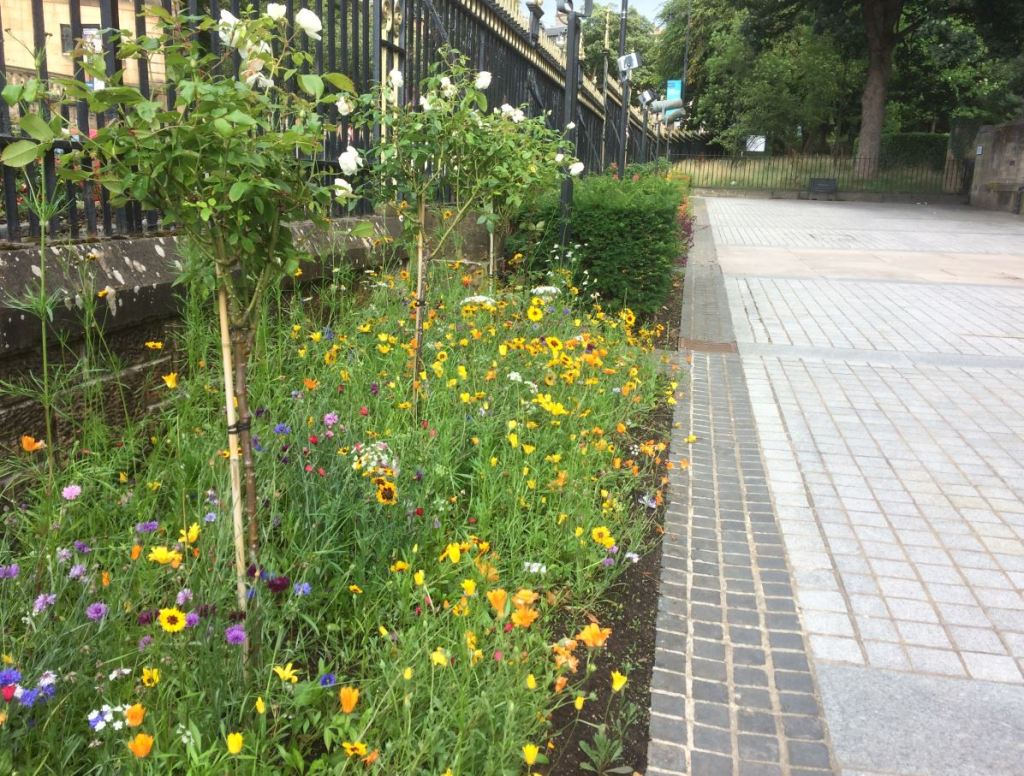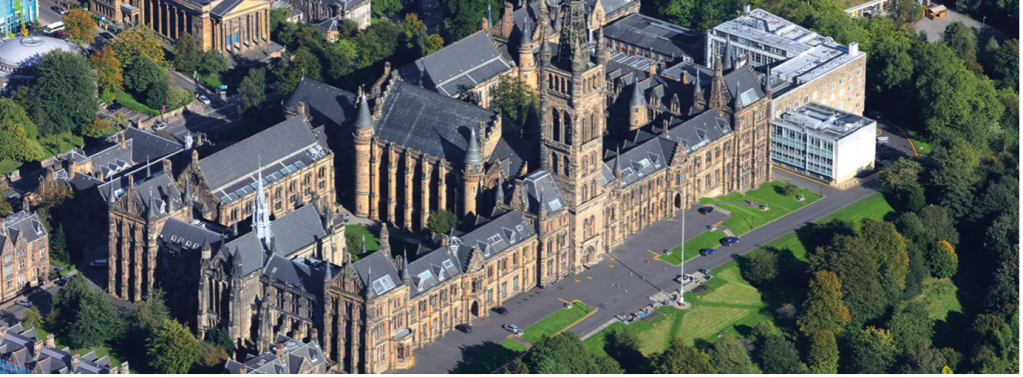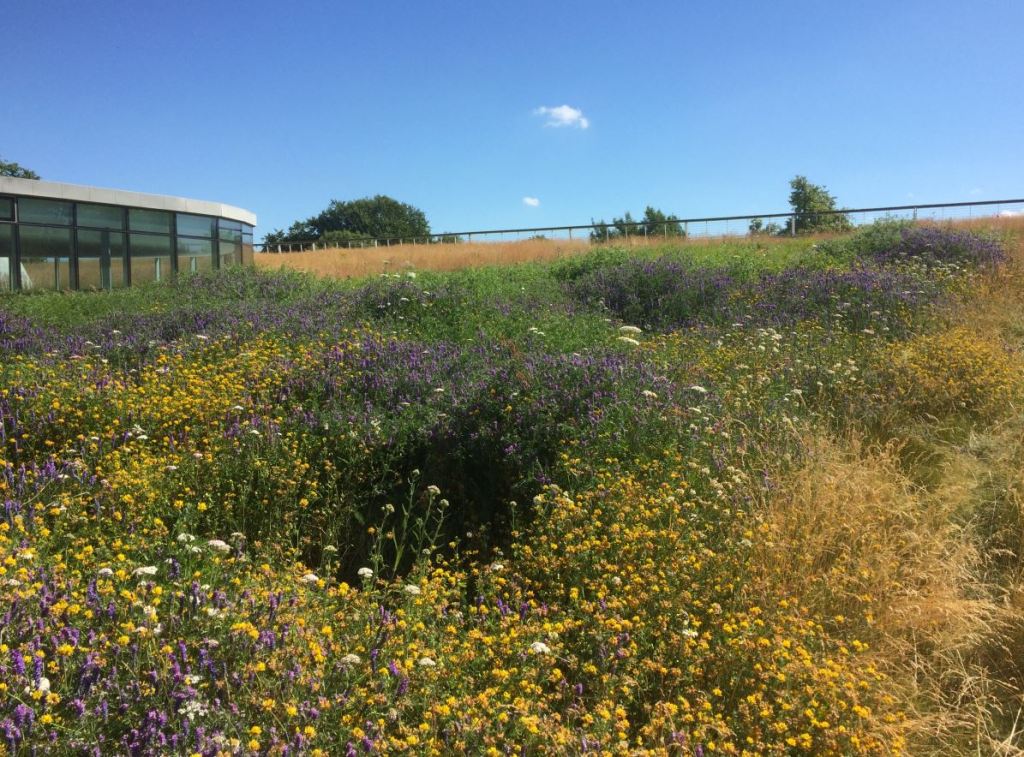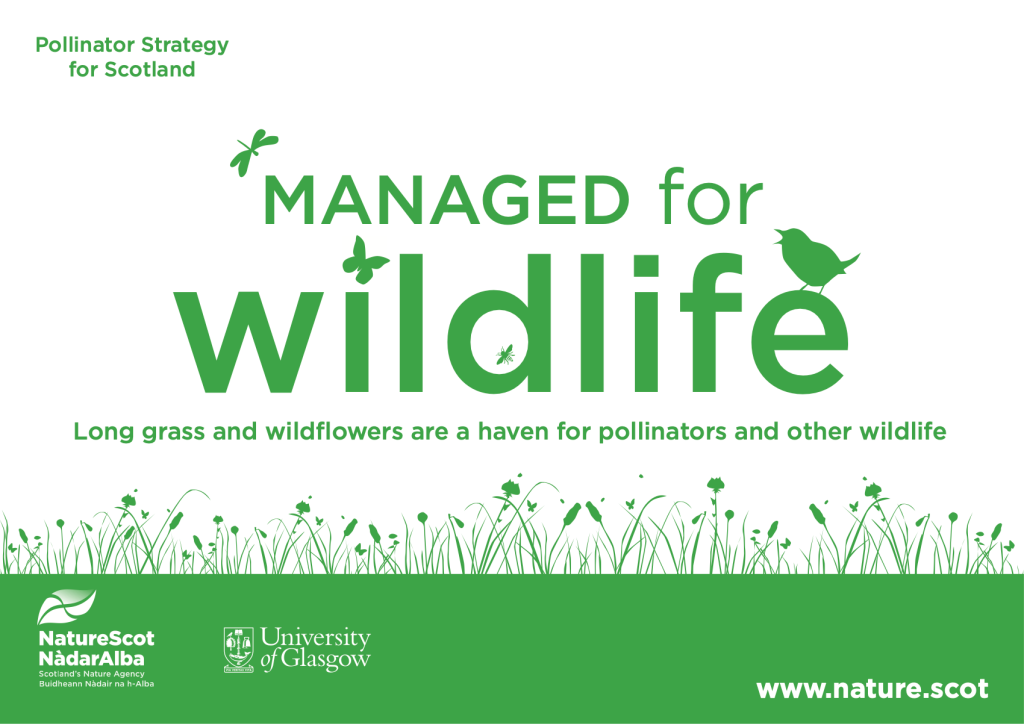You have to go back to the fifteenth century to trace the roots of the University of Glasgow. Fast forward to the present, and you find a highly respected academic institution that remains relevant and dynamic. One area of increasing activity is the University’s approach to greenspace management. Paul Brannan is the Grounds Operations Manager, and in this guest blog he outlines many of the actions taking place across the University estate to help nature.

Founded in 1451, Glasgow University has more listed buildings than any other university in the United Kingdom. With such a remarkable architectural legacy you might think that greenspaces don’t get much of a look in. However, that’s not the case, the university has vigorously embraced action to help nature around its estates.
There are three sizable Glasgow University estates dotted within Greater Glasgow. They are very different from each other, yet each has the common task of ensuring their natural spaces deliver a range of benefits, complement historic surrounds, and support the academic energy of the university.

At the best-known of the trio — Gilmorehill campus, in Glasgow’s West End — David Jamieson as the University’s Grounds Lead, works with his team to achieve a nature-friendly environment within a bustling urban location. He and his team spend considerable time looking at ways the site can be made appealing to the students and academics who use it, whilst benefitting biodiversity.
Arguably dominated by the famous Gilbert Scott building, the Gilmorehill campus sits amidst a wealth of mature trees. Beneath the impressive canopy David and his colleagues transform areas of shrubbery with native plant species, and enhance lawned areas with swathes of nectar-rich bulbs which increasingly support early-season pollinators.
The university recognises the opportunities presented by its location in the heart of the city, and acknowledges it can ‘dove-tail’ its own efforts with the wider Biodiversity Action Plan of the City of Glasgow. Their sites can contribute to green corridors and stepping stones, and thus boost pollinator-friendly work being carried out by the city council.
There is certainly more open space and greenery to tap into four miles along the road at the university’s Garscube estate just beyond Maryhill.
Spanning 200 acres, Garscube is home to Veterinary Medicine students, the Wolfson Hall of Residence and impressive outdoor sports facilities. It was bought in 1947 and added to the university’s property portfolio as a solution to overcrowding at the popular Gilmorehill campus.
David’s enthusiastic team are taking decisive steps this year to encourage emerging pollinators, and to this end will be joining the increasingly high profile ‘No Mow May’ campaign. This fits neatly with the goals of the University’s Biodiversity Action Plan.

Heading out beyond Garscube’s leafy surrounds, the next significant property in the University’s ownership is Cochno Farm.
The estate was purchased in 1954 when it consisted of 220 acres, including 42 acres of woodland. Today the site, which lies just north of Clydebank, extends to approximately 850 acres. It is the Scottish Centre for Production Animal Health & Food Safety, as well as housing the University’s College of Medical, Veterinary & Life Sciences.
During 2023 around 20,000 additional trees were planted here as part of the university’s long-term sustainability strategy and climate change response. Director of Sustainability Dr Roddy Yarr notes the impact this will have; “The new forest will increase our biodiversity effort, creating and enhancing habitats on the farm”.
Among those 20,000 or so trees planted at Cochno Farm are various native species, including Scots Pine, Silver Birch, Downy Birch, Rowan, English Oak, Sessile Oak, Hawthorn, Black Elder and Goat Willow.
This all chimes neatly with the University’s latest Biodiversity Action Plan. Built around Phase-One habitat surveys carried out at Cochno, Gilmorehill, and Garscube, the findings have emphasised the need to reduce non-native species across all of the university sites.
David senses that within the University community his work to deliver positive biodiversity outcomes has strong support. “We want to help biodiversity across the University campuses as much as we can,” he notes, “and our grounds management approach is one way we can do this. The mapping and surveying carried out by our students has been extremely valuable, and has helped direct us towards focussing time on reducing our non-native species during a period when traditionally we would normally be focussed on mowing areas. This, of course, will give pollinators a significant helping hand”.

Telling contributions have been made across numerous spheres by University of Glasgow staff and graduates. From the fields of politics and medicine, through to famous authors and notable scientists, the list of high achievers is lengthy.
Today, the University of Glasgow remains one of the top universities in the world, and the drive to nurture a range of biodiversity-rich habitats on its estates is testament to a desire to merge local action with international vision. Scotland’s first university to declare a climate emergency, Glasgow University has always had an eye as much on the future as the past.
Further reading:
University of Glasgow, Biodiversity Strategy and Action plan (2022-2027)
The Glasgow University team: Stephen McAnenay (Biodiversity & Arbioculture Co-ordinator), Stewart Miller (Sustainability Team), Dr Stewart White (Senior Lecturer), Samantha Gibbons (Biodiversity Promoter with GUEST (Glasgow University Environmental Sustainability Team)) and Molly Davidson, GUEST Biodiversity and Gardening Coordinator.
Overhead image of Glasgow University courtesy and (c) Glasgow University website.
